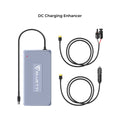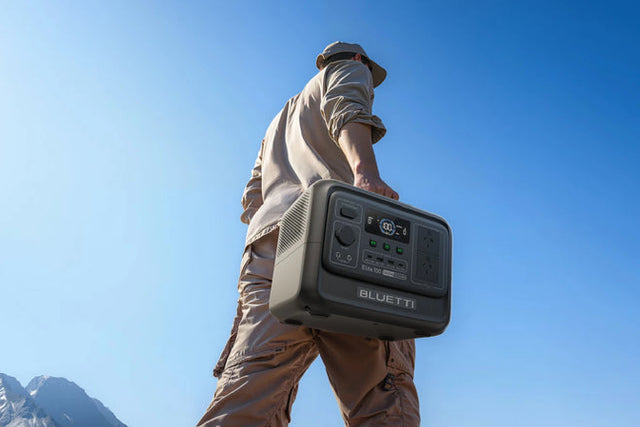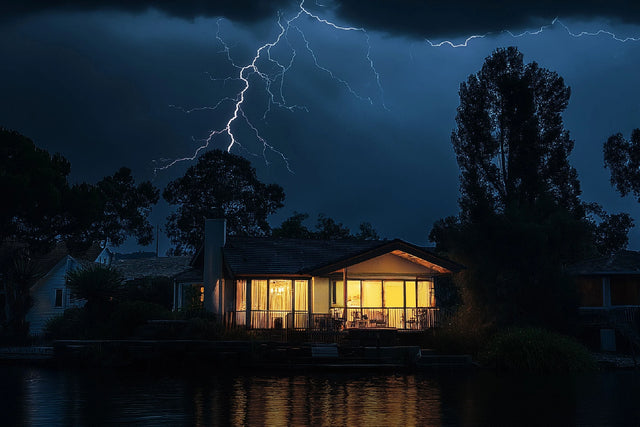Electricity is an essential part of our daily lives, powering our homes, businesses, and industries. As consumers, it's important to be aware of the cost of electricity and how it impacts our budget. For residents of Queensland, the cost of electricity per kilowatt-hour (kWh) is a topic of great interest and concern. In this article, we will delve into the details of how much electricity costs in Queensland, why it's important to understand this information, and how it can affect our lives. So let's plug in and explore the cost of electricity per kWh in Queensland.
How much does electricity cost in QLD?
Electricity is an essential necessity in our daily lives, powering our homes, businesses, and industries. In Queensland, electricity prices have been a hot topic for many years, with consumers and businesses alike concerned about the rising costs. With the increasing demand for electricity and the changing energy market, it is crucial to understand how much electricity costs in Queensland.
In Queensland, electricity prices are determined by the government's regulatory body, the Queensland Competition Authority (QCA). The QCA sets the electricity prices for residential, commercial, and industrial customers based on the cost of generating, transporting, and distributing electricity. These prices are then passed on to retailers, who ultimately charge consumers for their electricity usage.
As of July 2021, the average cost of electricity per kilowatt-hour (kWh) in Queensland was around 27 cents for residential customers. This includes both the supply charge and usage charges. However, the actual cost of electricity can vary depending on several factors, such as your location, energy retailer, and usage patterns.
One of the major contributing factors to the cost of electricity in Queensland is the cost of generating electricity. Queensland relies heavily on coal-fired power plants for electricity generation, which is a significant contributor to carbon emissions and the overall cost of electricity. The state government has set a target to reach 50% renewable energy by 2030, which could lead to a decrease in electricity prices in the long run.
Another factor that influences electricity prices is the cost of transmission and distribution. These are the charges for transporting electricity from power plants to your home or business. The cost of maintaining and upgrading the electricity network is included in these charges, which can impact the overall cost of electricity in Queensland.
Additionally, electricity prices in Queensland can also vary based on the time of day you use electricity. Many electricity retailers offer different tariffs for peak, off-peak, and shoulder periods. Peak periods are generally during the day when there is high demand for electricity, while off-peak and shoulder periods have lower electricity prices. By understanding your usage patterns and choosing a tariff that suits your needs, you could potentially save on your electricity bill.
Other factors that can impact electricity prices in Queensland include government fees and taxes, network charges, and retailer charges. In recent years, the introduction of carbon pricing and other environmental schemes has also added to the cost of electricity in Queensland.
It is also worth noting that electricity prices in Queensland can vary significantly between energy retailers. As a regulated market, retailers can set their own prices for electricity, leading to a difference in costs for consumers. It is essential to shop around and compare prices from different energy providers to find the best deal for your electricity needs.
electricity prices in Queensland are influenced by various factors, including the cost of generating, transporting, and distributing electricity. The average cost of electricity per kWh in the state is around 27 cents, but this can vary depending on location, energy retailer, and usage patterns. With the government's aim to increase renewable energy sources and the potential for more competition in the energy market, there is hope for a decrease in electricity prices in the future.

Electricity Rates in Queensland
In Australia, electricity rates vary depending on the state you live in. In Queensland, the cost of electricity is determined by the electricity retailer you choose and the type of plan you are on. The two main components of electricity rates are the general usage rate and the daily supply charge. Let's take a look at the rates offered by some of the major electricity providers in Queensland.
| Electricity Provider | Electricity Plan | General Usage Rate | Daily Supply Charge |
|---|---|---|---|
| AGL | Value Saver | 28.89¢/kWh | 120.02¢/day |
| Alinta Energy | BetterDeal | 32.67¢/kWh | 126.17¢/day |
| Amber Electric | Amber Plan – Variable Wholesale Prices | 26.33¢/kWh | 108.00¢/kWh |
| Dodo | Market Offer | 28.22¢/kWh | 82.66¢/day |
| EnergyAustralia | Flexi Plan | 33.52¢/kWh | 115.50¢/day |
| Origin Energy | Go Variable | 28.84¢/kWh | 120.60¢/day |
| OVO Energy | The One Plan | 27.61¢/kWh | 93.50¢/day |
As seen in the table above, the general usage rate for electricity ranges from 26.33¢/kWh to 33.52¢/kWh, while the daily supply charge ranges from 82.66¢/day to 126.17¢/day. This means that depending on the plan you choose, you could be paying a higher or lower price for the same amount of electricity used.
One of the main factors that determine the cost of electricity per kWh in Queensland is the type of plan you are on. Some retailers offer fixed rate plans, where the general usage rate and daily supply charge remain constant for the duration of the contract. On the other hand, there are also plans with variable rates, where the prices can fluctuate depending on the wholesale price of electricity in the market.
Another important aspect to consider when looking at electricity rates in Queensland is the time of use. Time of use plans have different pricing for electricity usage during peak, off-peak, and shoulder periods. Peak periods are when electricity demand is at its highest, usually during the evening. Off-peak periods are when demand is lower, and shoulder periods fall in between. These plans can be a good option for households that have the flexibility to shift their energy usage to off-peak periods, as it could result in lower electricity bills.
In addition to these factors, the location and size of your home also play a role in determining your electricity rates. Homes in regional areas may have different rates compared to those in urban areas, and larger homes will typically have higher electricity rates due to their higher energy consumption.
It is important to regularly review your electricity plan and retailer to ensure that you are getting the best rates and deals. With a variety of options available, it is worth taking the time to compare electricity plans and find one that suits your needs and budget.
the cost of electricity per kWh in Queensland varies between 26.33¢ and 33.52¢, with daily supply charges ranging from 82.66¢ to 126.17¢. The type of plan, time of use, location, and size of your home can all affect your electricity rates. It is important to regularly review your plan and retailer to ensure that you are getting the best deal for your energy needs.

Queensland Electricity Plans
In Queensland, there are multiple electricity retailers that offer different plans for consumers to choose from. These plans vary in pricing, payment options, and contract terms. In this article, we will discuss three popular electricity plans in Queensland and explain their features.
1. Standard Retail Plan
The standard retail plan is the most common and basic electricity plan offered by retailers in Queensland. This plan has a fixed rate for each kilowatt-hour (kWh) of electricity used. The rate can vary depending on the retailer, but on average, it is around 20 cents per kWh. This plan also has a daily supply charge, which is a fixed amount that you pay for having access to electricity. This charge covers the cost of maintaining the electricity network and is typically between 80 cents to $1.50 per day. The standard retail plan does not have any discounts or incentives, and the contract is usually for a 12-month period. This plan is suitable for those who prefer a fixed rate and are not interested in any additional features.
2. Time of Use Plan
A time of use (TOU) plan is a more flexible option for electricity consumers in Queensland. This plan has different rates for electricity usage based on the time of day. The day is divided into peak, off-peak, and shoulder periods, and the rates vary accordingly. Peak hours are when the demand for electricity is the highest, usually in the morning and evening. Off-peak hours are when the demand is the lowest, typically at night. Shoulder hours are the periods between peak and off-peak, and the rates are in between. The TOU plan also has a daily supply charge, but it can be lower compared to the standard retail plan. The advantage of this plan is that you can save money by using electricity during off-peak hours. This plan is suitable for people who can adjust their electricity usage according to the time of day and are interested in saving money on their bills.
3. Solar Feed-in Tariff Plan
The solar feed-in tariff plan is specifically designed for households with solar panels in Queensland. This plan offers a higher rate for the excess solar energy that is exported back to the grid. The energy that is not used by the household is automatically sent to the electricity grid, and the retailer pays a certain amount for it. The rate for this exported energy can vary, but it is usually around 8 to 10 cents per kWh. This plan also has a daily supply charge, but it can be lower compared to the standard retail plan. The solar feed-in tariff plan is suitable for households that have solar panels and produce more energy than they consume.
electricity plans in Queensland offer various options for consumers to choose from, depending on their needs and preferences. The standard retail plan is the most basic option, while the TOU and solar feed-in tariff plans provide more flexibility and potential savings. It is important to research and compare different plans offered by retailers to find the most suitable one for your household. With the right plan, you can effectively manage your electricity usage and save money on your bills.
How do electricity bills work in QLD?
Electricity bills in Queensland are calculated based on two main factors: the supply charge and the usage charge. The supply charge is a fixed amount that customers pay for being connected to the electricity grid, while the usage charge is based on the amount of electricity consumed, measured in kilowatt-hours (kWh). In addition to these charges, there are different types of tariffs that can affect the overall cost of electricity for QLD residents. Let's take a closer look at each of these factors and how they contribute to the final electricity bill.Supply charge:
The supply charge is a fixed cost that customers pay to their electricity retailer for the upkeep and maintenance of the electricity grid. This charge is calculated based on the daily meter read and is the same regardless of the amount of electricity used during that period. In Queensland, the average supply charge is around $1 per day, but this can vary depending on the electricity retailer and the customer's location.
Usage charge:
The usage charge is the main component of an electricity bill and is determined by the amount of electricity consumed by the customer. This charge is calculated by multiplying the price per kWh by the total amount of electricity used during the billing period. The cost per kWh can also vary depending on factors such as the electricity retailer, the type of tariff, and the time of day the electricity is used.
Flat rate tariffs:
Flat rate tariffs are the most common type of electricity pricing in Queensland. With this tariff, customers pay the same price per kWh regardless of the time of day the electricity is used. This means that whether the electricity is used during peak or off-peak hours, the cost per kWh remains the same. This type of pricing is suitable for those who have a consistent and predictable use of electricity throughout the day.
Time-of-use tariffs:
Under a time-of-use tariff, electricity prices vary depending on the time of day the electricity is used. This tariff has different rates for peak, off-peak, and shoulder periods, with peak periods being the most expensive. This type of pricing is designed to encourage customers to shift their electricity usage to off-peak times, reducing their overall electricity bills. Time-of-use tariffs are suitable for those who have a flexible schedule and can adjust their electricity usage according to the pricing structure.
Demand tariffs:
Demand tariffs take into account not only the amount of electricity used but also the maximum amount of electricity used at any given time. This is known as peak demand and is measured in kilowatts (kW). Under this tariff, customers are charged a rate for each kW of peak demand, which is added to the usage charge. Demand tariffs are more common for businesses and industries that require a large amount of electricity at peak times.
Interruptible supply tariffs:
Interruptible supply tariffs are similar to demand tariffs, but with an added element of flexibility. Under this tariff, customers agree to reduce their electricity usage when there is a high demand for electricity in the grid. In return, they receive a lower rate for their usage charge. This type of tariff is suitable for large businesses and industries that can quickly adjust their electricity usage during peak demand periods.
electricity bills in Queensland are not only influenced by the amount of electricity used but also by the type of tariff chosen. Understanding the different types of tariffs and their pricing structure can help customers make informed decisions and potentially save money on their electricity bills. It is important to regularly review electricity plans and tariffs to ensure that they are suitable for individual needs and usage patterns.

What electricity rebates or concessions are available in QLD?
As electricity prices continue to rise, the Queensland government has introduced several rebates and concessions to help individuals and families with their electricity bills. These are available to certain groups of customers who may be struggling with their electricity costs. Let's take a look at the different rebates and concessions available in Queensland:
1. Electricity Rebate:The electricity rebate is available to customers who hold one of the following cards:
- Pensioner Concession Card
- Department of Veterans’ Affairs Gold Card
- Queensland Seniors Card
- Services Australia Health Care Card
- Asylum seeker status
This rebate provides a daily discount on electricity costs and is automatically applied to the customer's bill.
2. Medical Cooling and Heating Electricity Concession Scheme:This concession is available to customers who have a medical condition that requires the use of air conditioning or heating to manage their health. Eligible customers can receive a discount on their electricity costs to help with the additional expenses of using these appliances.
3. Home Energy Emergency Assistance Scheme:In the event of an emergency, such as a natural disaster or unexpected financial crisis, this scheme provides assistance to eligible customers to help cover their electricity bills. This can be in the form of a one-off payment or a credit on the customer's bill.
4. Cost of Living Rebate:As part of the Queensland government's commitment to easing the cost of living for households, eligible customers can receive a rebate on their electricity bill. This rebate is available to customers who receive the electricity rebate and have a residential address in Queensland.
these rebates and concessions can provide much-needed relief to customers who are struggling with high electricity costs. It's important for eligible customers to be aware of these schemes and take advantage of them to help manage their electricity bills.
electricity prices in Queensland may vary based on usage and location, but with the government's rebates and concessions, customers can save on their electricity costs and alleviate some financial burden. Make sure to check your eligibility and apply for these schemes to receive the benefits and reduce your electricity bill.
Can I choose my Electricity Provider in QLD?
Many residents in Queensland may be wondering if they have the ability to choose their own electricity provider. The answer is, yes, you do have a choice when it comes to your electricity provider in QLD. However, it's important to understand the process and factors involved in choosing your electricity provider.
In Queensland, the government has deregulated the electricity market, meaning that you can choose your own electricity retailer. This gives consumers the power to compare prices and services offered by different retailers and choose the one that best fits their needs.
When it comes to choosing your electricity provider in QLD, there are a few important factors to consider. The first is the type of retailer you want to switch to. There are three main types of electricity retailers in Queensland, including large retailers, small retailers, and government-owned retailers. Each type has its own advantages and disadvantages, so it's important to do your research and choose the one that aligns with your preferences and values.
Another important factor to consider is the pricing structure of the retailer. In Queensland, electricity prices are influenced by a range of factors, including the cost of generating electricity, network fees, and government charges. When comparing retailers, it's important to not only look at the headline price per kWh, but also the additional fees and charges that may be included in your bill.
Additionally, it's important to consider the customer service and support offered by different retailers. This can include factors such as the availability of online or phone support, the ease of bill payments, and the level of transparency when it comes to billing and pricing. You want to choose a retailer that not only offers competitive pricing but also has good customer service and support to ensure a smooth and hassle-free experience.
Now that we've covered the factors to consider when choosing your electricity provider in QLD, let's talk about the process itself. Switching electricity providers in Queensland is a relatively simple process. You can start by researching and comparing different retailers online, using comparison websites or the government's Energy Made Easy website.
Once you have chosen a retailer, you can contact them directly or sign up online. Your new retailer will then handle the entire process of switching for you. This includes contacting your current retailer to cancel your account and arranging for your new service to be connected. There is usually no interruption in your electricity supply during the switch, and you will continue to receive bills from your new retailer.
It's important to note that while you have the ability to choose your electricity provider in QLD, you may not have complete control over the pricing. As mentioned earlier, electricity prices in QLD are influenced by various external factors, and retailers may have limited control over the overall pricing structure.
residents in Queensland do have the ability to choose their electricity provider. By considering factors such as retailer type, pricing structure, and customer service, you can find the best fit for your needs. With a simple and hassle-free switching process, it's worth doing some research to find the right electricity retailer for you.
1. How are electricity rates determined in Queensland?
Electricity rates in Queensland are determined by a variety of factors, including the cost of generating and supplying electricity, government policies and regulations, and market competition. The main factors in determining electricity rates are the cost of generation, which includes fuel costs and operation and maintenance expenses, and the cost of delivering electricity to customers, which includes transmission and distribution costs.
The cost of generating electricity is influenced by many factors, such as the price of fuel sources, the efficiency of power plants, and the availability of renewable energy sources. Government policies and regulations also play a role in determining electricity rates. In Queensland, the state government sets the maximum price that electricity retailers can charge, known as the regulated price. This price is based on the average cost of producing and delivering electricity, and is reviewed and adjusted annually.
Market competition also plays a significant role in determining electricity rates in Queensland. Retailers are able to offer competitive prices to customers, leading to a range of rates in the market. This competition is encouraged by the state government, which promotes a competitive and efficient market through policies and regulations.
electricity rates in Queensland are determined by a complex combination of factors, including generation and delivery costs, government policies and regulations, and market competition. This helps to ensure that customers are offered fair and reasonable prices for electricity, while also promoting a sustainable and efficient electricity market in the state.
2. Are there different rates for residential and commercial electricity customers in Queensland?
In Queensland, the cost of electricity per kilowatt hour (kWh) varies depending on whether the customer is a residential or commercial user. The Queensland Government's Energy and Water Ombudsman (EWOQ) website states that residential electricity customers are charged a tariff called "Tariff 11", which is a flat rate for all electricity usage throughout the day. On the other hand, commercial customers are charged based on "Tariff 20" or "Tariff 22", which have different rates for peak and off-peak usage. This means that commercial customers may pay a different rate for electricity during peak hours (typically weekdays from 7am-9pm) compared to off-peak hours (all other times). Therefore, it is important for businesses to carefully monitor their electricity usage and adjust their operations accordingly in order to save money on their electricity bill.
there are indeed different rates for residential and commercial electricity customers in Queensland, with commercial customers having the option of choosing between different tariffs based on their usage patterns. Understanding these differences and making informed decisions about electricity usage can ultimately lead to cost savings for both residential and commercial customers in Queensland.3. Is there a peak and off-peak pricing structure for electricity in Queensland?
The pricing structure for electricity in Queensland includes both peak and off-peak rates. This means that the cost per kilowatt-hour (kWh) of electricity varies depending on the time of day. Typically, peak hours are during the day when electricity demand is highest, while off-peak hours are during the night when demand is lower.Currently, the peak and off-peak rates in Queensland are set by the state's electricity retailers and can vary between different areas. However, there are efforts being made to standardize these rates across the state.
Peak rates are generally higher than off-peak rates, as they reflect the higher cost of producing electricity during times of high demand. This encourages consumers to use electricity during off-peak hours when possible, which can help to reduce strain on the electricity grid and promote more efficient use of energy.
It's important to note that peak and off-peak times may differ between retailers, so it's important for consumers to check with their specific provider for the exact times and rates. Additionally, some retailers may offer discounted rates for using electricity during certain off-peak times, such as evenings and weekends.
there is a peak and off-peak pricing structure for electricity in Queensland. This structure is intended to promote efficient energy use and help manage electricity demand during peak hours. Consumers should be aware of their specific retailer's peak and off-peak rates and times in order to make informed decisions about their energy usage.
4. Are there any government subsidies or discounts available for electricity in Queensland?
In Queensland, electricity is supplied by both government-owned and privately-owned companies. The main government-owned electricity provider is Energy Queensland, which delivers electricity to over 2.2 million customers throughout the state. As for private companies, the largest is Origin Energy, followed by AGL and EnergyAustralia.
Many customers in Queensland are concerned about the cost of electricity and whether there are any government subsidies or discounts available to help alleviate the financial burden. The good news is that there are several programs and initiatives in place to assist households and businesses with their electricity bills.
One of the main initiatives is the Queensland Government's Electricity Rebate. This provides eligible pensioners, seniors, and veterans with a rebate of up to $340 per year on their electricity bills. To qualify, customers must hold a valid concession card and their electricity account must be in their name. This rebate is automatically applied to bills from Energy Queensland, Origin Energy, AGL, and EnergyAustralia.
Additionally, there is the Home Energy Emergency Assistance Scheme (HEEAS), which offers a one-off payment of up to $720 for customers experiencing financial hardship and struggling to pay their electricity bills. This scheme is available to all customers in Queensland, regardless of their energy provider.
Moreover, the Queensland Government has recently introduced the Affordable Energy Plan, which aims to reduce electricity prices for all customers by an average of $50 per year over the next two years. This will be achieved through a combination of measures, including a two-year cap on electricity prices and a $50 annual rebate for households.
there are several government subsidies and discounts available for electricity in Queensland. These initiatives help to make electricity more affordable for households and businesses, and support those who are facing financial hardship. Customers are encouraged to check their eligibility for these schemes and take advantage of the savings they offer.
5. How does the cost of electricity in Queensland compare to other states in Australia?
The cost of electricity in Queensland is an important topic for many residents, and one question that often arises is how it compares to other states in Australia. On average, Queensland has some of the highest electricity prices in the country, with the average price per kWh being around 30 cents. This is higher than the national average of 28 cents per kWh. However, when compared to other states, the difference in electricity prices is not as significant. For example, New South Wales and South Australia have similar average electricity prices to Queensland, while Tasmania and Victoria have slightly lower prices.
There are several factors that contribute to the cost of electricity in each state, including the availability of resources, population density, and government regulations. For Queensland, the abundance of coal resources for electricity generation and the relatively low population density in certain areas may contribute to higher prices compared to other states. On the other hand, states such as Tasmania and Victoria have access to cheaper hydroelectricity and a higher population density, which may explain their lower electricity prices.
It is important to note that electricity prices can also vary within the state of Queensland itself. For example, areas with a higher concentration of renewable energy sources, such as solar or wind, may have lower prices due to lower production costs. Additionally, government regulations and subsidies can also have an impact on electricity prices. For instance, states with stronger renewable energy targets and incentives may have slightly higher prices in order to support the growth of these industries.
while Queensland may have higher electricity prices on average compared to other states in Australia, the difference is not significant. It is also important to consider the various factors that contribute to these prices, and how they may differ within the state itself. Ultimately, the cost of electricity in Queensland, as in any other state, is influenced by a complex combination of factors that are constantly evolving.
the cost of electricity per kWh in Queensland may vary depending on your energy provider, usage patterns, and location. However, the average residential electricity rate in Queensland is around 25 cents per kWh, which is higher compared to other states in Australia. It is important to regularly review your electricity usage and consider switching to a more affordable energy plan to save on your electricity bills. With the increasing popularity of renewable energy sources, it is also worth exploring options such as solar panels to help reduce your electricity costs in the long run. As technology continues to advance, we can only hope for more affordable and sustainable solutions to power our homes in the future.












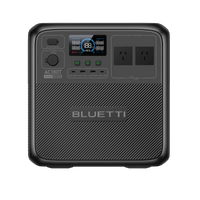












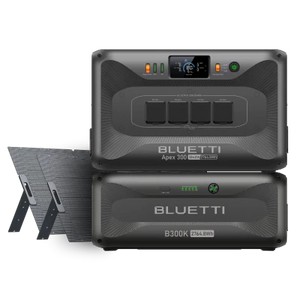





















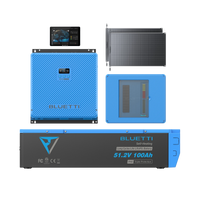





















![[Phased Out] BLUETTI B80P Expansion Battery | 806Wh](http://www.bluettipower.com.au/cdn/shop/files/202310025B80P_2000-2000px_4_4caa0c1c-4dab-4272-9e9b-2b7507e5bd81.jpg?v=1713777870&width=200)
![[Phased Out] BLUETTI B210P Expansion Battery | 2,150Wh](http://www.bluettipower.com.au/cdn/shop/files/2_08cf9ef3-03a4-4489-b641-d3edb8094896.webp?v=1716016566&width=200)
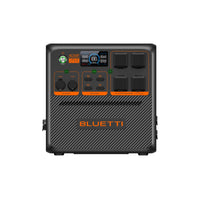


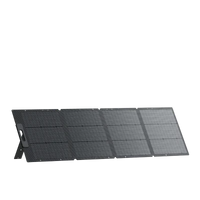


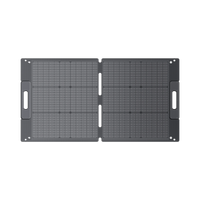




























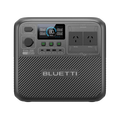

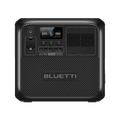






























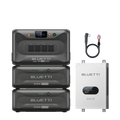









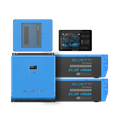



































![[Phased Out] BLUETTI B80P Expansion Battery | 806Wh](http://www.bluettipower.com.au/cdn/shop/files/202310025B80P_2000-2000px_4_4caa0c1c-4dab-4272-9e9b-2b7507e5bd81.jpg?v=1713777870&width=120)
![[Phased Out] BLUETTI B210P Expansion Battery | 2,150Wh](http://www.bluettipower.com.au/cdn/shop/files/2_08cf9ef3-03a4-4489-b641-d3edb8094896.webp?v=1716016566&width=120)


















